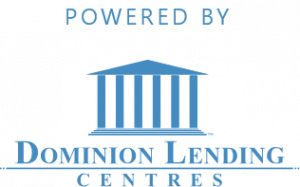How To Leverage Your Savings Accounts As A First-Time Homebuyer
How To Leverage Your Savings Accounts As A First-Time Homebuyer
First-time homebuyers often encounter issues when purchasing a property, battling against high prices and plenty of competition. However, Canada’s 2024 Federal Budget announced numerous changes and incentives to simplify the journey.
If you’re dreaming of ending the constant cycle of renting and purchasing a property, know it is possible. But, to make it happen, you’ll need to leverage your savings account and utilize the incentives for first-time buyers.
In this guide, we’ll reveal how you can make your savings count and finally get onto the property ladder.
How The Key Interest Rate Affects Canadians Savings Accounts
The Bank of Canada determines key interest rates, which have a direct impact on savings accounts. As we revealed in our 2024 Federal Budget Update, the BoC decided to hold rates at 5%, although this could change in June.
When interest rates increase, they can raise mortgage costs, but it also means your savings will generate more interest. However, if these rates decrease, you might need to search for accounts that offer better rates.
Many people take advantage of higher rates by saving more money and avoiding borrowing it instead. So, a 5% hold is still beneficial for first-time homebuyers because you can generate consistent interest on your savings and save for a downpayment.
How To Determine and Maximize Savings

Buying a property requires a downpayment, and many people turn to their savings accounts when it’s time to leave the stresses of renting behind. So, the first thing to do is assess your current financial situation and determine where to save money.
1: Define a clear budget of earnings and expenses
Saving for a downpayment is great, but it’s important to assess your earnings and average expenses. Remember, you’ll probably need a mortgage, and many people jump into purchasing a property without realizing how much it will cost them.
Creating a clear list of your earnings and factoring in potential mortgage expenses can help you determine whether you’re in an excellent position to buy a home.
2: Avoid carrying a balance on high-interest lending products such as credit cards
According to Fairstone, the average Canadian has $4,265 in credit card debt and 31 million people in Canada own credit cards. While they can be lifelines in emergencies, spending carelessly could impact your financial situation.
Avoiding high-interest credit cards can help you leverage your income and save more money over time—the same goes for loads and other financial products. Additionally, having access to too much open credit can hinder your chances of mortgage approval. When it comes to closing lines of credit, we recommend never severing your oldest products.
Always consider the long-term implications of any financial decision instead of focusing on the immediate benefits.
3: Explore high-interest savings products and account promotions
Canadians have access to plenty of savings accounts – but are you getting the best deals? Shopping around means you could find high-interest accounts that let you earn more money on what you save and build a larger down payment.
Many companies also offer incentives for new customers, including higher introductory interest rates and money for switching to them. Remember to research different accounts and find the best promotions for your needs.
4: Look into employer-matching benefits
Many employers in Canada offer matching benefits, which serve as incentives to save for retirement. If you put some of your salary into accounts such as the RRSP, your employer will match a percentage of your contributions.
The most popular structure matches 50% of your contributions and up to 4% of your salary. While this might not seem like a lot, it’s free money.
Different Savings Accounts Explained
So, now you know more about how first-time homebuyers can leverage their savings, it’s time to explore the different accounts available.
Each of the following has unique benefits; the one you choose ultimately depends on your savings goals and which incentives are most beneficial.
RRSP
The Registered Retirement Savings Plan (RRSP) is one of Canada’s most popular accounts, as it enables you to plan for retirement while also accessing a range of benefits. These plans are tax-free unless you receive a payment from them – which is possible.
Canada’s new Home Buyer’s Plan lets RRSP holders withdraw money from their accounts to purchase a home. You can withdraw between $35,000 and $60,000 to buy an existing property or build a new one, significantly boosting your down payment.
Pros:
- RRSPs are flexible regarding investment opportunities, including bonds, stocks and GICs.
- You can withdraw money under the Home Buyer’s Plan and avoid paying taxes for a set timeframe.
- In most cases, RRSP funds are protected from creditors.
Cons:
- There are limits to the yearly contributions you’ll make.
- People on lower salaries often prefer tax-free savings accounts as they offer more benefits.
TFSA
Many first-time buyers leverage tax-free savings accounts as they offer a range of benefits and are easy to manage. These registered accounts are highly flexible and enable you to save for anything without worrying about taxation.
Whether you want to use them to fulfill short-term goals or save up for a down payment, TFSAs are available for anyone over 18 with a Canadian social security number.
Pros:
- Withdrawals are tax-free, making TFSAs ideal for first-time buyers.
- These accounts are highly accessible, and you don’t need to be in employment to open one.
- Withdraw and re-contribute money as and when you need it, ensuring you meet your savings goals.
Cons:
- TFSAs have limited contribution amounts, so you might need to explore other options when building a down payment.
- The accounts aren’t income-based and won’t reduce your yearly tax.
FHSA
The First Home Savings Account is ideal for people who want to climb the property ladder. As the savings plan is intended for first-time buyers, you can take advantage of various incentives, including tax-deductible contributions and higher contribution limits.
Anyone over 18 can open an account, begin making contributions immediately, and take advantage of investment options that diversify their savings.
Pros:
- With an annual contribution limit of $8,000 and a lifetime limit of $40,000, saving for a home is easier.
- Many people combine their FHSA and RRSP to generate a higher down payment.
- All contributions are tax-deductible, as is the withdrawal you make for the down payment.
Cons:
- BC is notoriously expensive, and using just an FHSA gives you a maximum down payment of $40,000 – which probably isn’t enough.
- There aren’t as many investment options, as the plans are newer than RRSPs and TFSAs.
HISA
Many Canadians opt for a High-Interest Savings Account, which allows them to earn more money on contributions and save for the future. One reason these accounts are so popular is their flexibility.
You can make regular withdrawals or contributions while also taking advantage of security through the CDIC. While interest rates might vary, most accounts offer better terms than traditional savings and can help you reach your down payment goals quickly.
Pros:
- Interest rates on these accounts are higher than traditional accounts, with some options offering 4%.
- Due to CDIC protection, the risks associated with HISAs are low. Even if the rates fluctuate, most people still make a return on their investments.
- These accounts allow you to save for the future but make emergency withdrawals as and when needed.
Cons:
- While high-interest accounts are beneficial, many companies charge maintenance fees.
- You’ll also have to maintain a minimum balance in most cases, but as it’s a savings account, you’ll probably have enough money there anyway.
GIC
Guaranteed Investment Certificates are popular solutions for people who want a clear roadmap to generating a down payment. With a GIC, you’ll enter into an agreement with a bank or credit union, contributing a set amount of money for the set term.
Some people choose a short-term savings account, while others opt for longer-term investments, which allow them to save for a down payment.
The company agrees to pay a set interest rate throughout your GIC agreement, making it easier to afford your first home.
Pros:
- Regardless of what happens to the economy, your pre-agreed GIC rate will remain the same.
- These accounts are highly secure as the CDIC insures them.
- Some longer-term accounts offer higher interest rates.
Cons:
- GICs don’t offer the same returns as bonds or stocks but are less risky.
- While your rate will remain stable, economic downturns mean you might miss out on high rates initially.
- When you agree to a GIC, it’s in place for a set term, so you can’t withdraw any money.
Book A Consultation With A Victoria Mortgage Broker

Saving for your first home can be daunting, but choosing the right accounts and focusing on reaching your goals means you can begin to prepare for a new property. Once you have savings in place, it’s time to look for the best mortgage deals and turn your dreams into a reality.
Prime Mortgage Works has years of experience working with first-time buyers, and our dedicated brokers can help you find mortgages that meet your needs. Please feel free to contact us with any questions or apply for a mortgage today.


